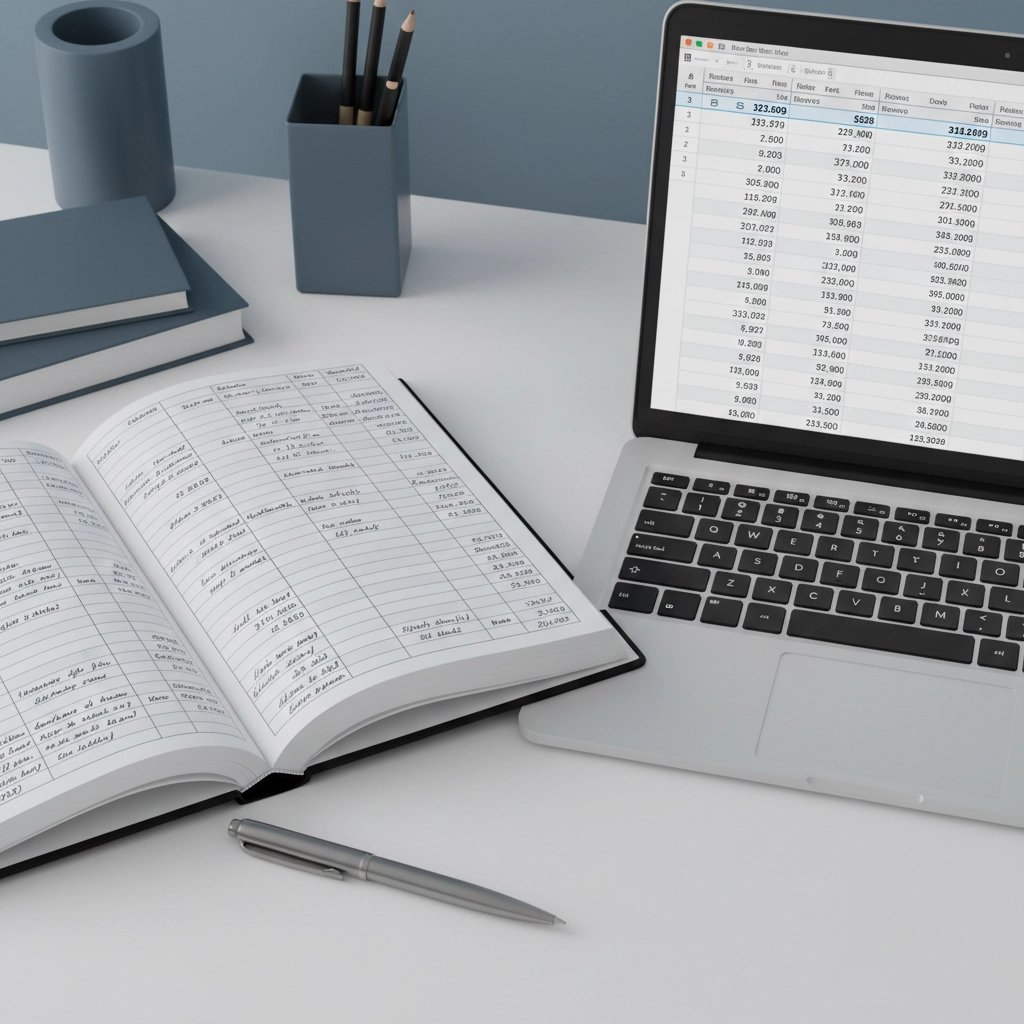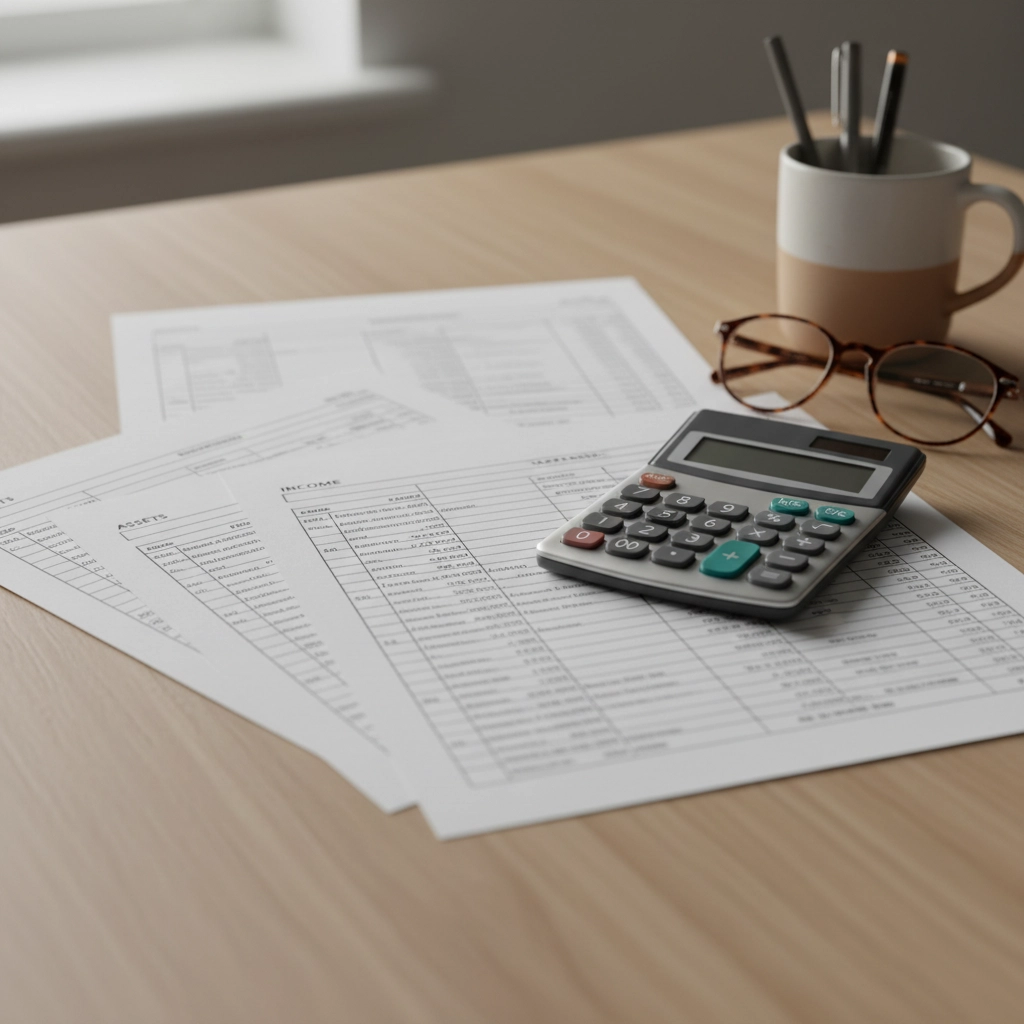The 6 Steps in the Accounting Cycle Every Small Business Owner Needs to Know (Before Tax Season Hits)
- Travis Howland

- 1 hour ago
- 5 min read
Tax season doesn't have to be the nightmare that keeps you up at 3 AM surrounded by receipts and spreadsheets. The secret? Following a simple accounting cycle throughout the year instead of scrambling at the last minute.
Think of the accounting cycle as your business's financial GPS: it keeps you on track, shows you exactly where your money is going, and gets you to your destination (aka tax season) without getting lost in a pile of paperwork.
Here are the 6 steps that'll transform your bookkeeping from chaos to clarity, and make April 15th feel like just another Tuesday.
Step 1: Identify and Analyze Every Transaction
This is where it all starts: and it's way simpler than it sounds. Every time money moves in or out of your business, you need to capture it. We're talking about sales, purchases, expenses, payments to contractors, office supplies, that coffee you bought for a client meeting: everything.
The key is consistency. Set up a system where you're not hunting down transactions three months later. Here's what to track for each transaction:
Date when it happened
Amount (obviously)
Who was involved (customer, vendor, etc.)
What it was for
Which accounts it affects
Pro tip: Use your phone to snap photos of receipts immediately. Your future self will thank you when you're not trying to decipher a faded receipt from that gas station in nowhere.

Step 2: Record Transactions in Your Journal
Now we get to log everything in chronological order. This creates your audit trail, basically proof that shows exactly what happened and when.
Here's where double-entry bookkeeping comes in, but don't panic. It just means every transaction affects at least two accounts, and the math always has to balance out. For example:
You buy $100 worth of office supplies
Your Office Supplies account goes up by $100 (debit)
Your Cash account goes down by $100 (credit)
Everything balances, and you move on with your life
The beauty of this system is that it catches mistakes automatically. If your debits don't equal your credits, you know something's wrong before it becomes a bigger problem.
Step 3: Post to Your General Ledger
Think of your general ledger as the organized filing cabinet where all your journal entries get sorted by category. Instead of having one long list of transactions, you now have them grouped by account type: all your sales together, all your office expenses together, and so on.
This step is where patterns start to emerge. You might notice you're spending way more on software subscriptions than you realized, or that certain months are consistently better for sales. This isn't just busy work: it's giving you the data to make smarter business decisions.
Modern accounting software does most of this automatically, but understanding what's happening behind the scenes helps you spot when something looks off.

Step 4: Prepare Your Trial Balance
This is your checkpoint: the moment where you make sure everything adds up before moving forward. A trial balance lists all your accounts and their current balances, and the magic number you're looking for is zero. Total debits should equal total credits.
If they don't match, don't panic. It usually means:
A transaction was entered in the wrong account
You missed recording something
There's a simple math error somewhere
Finding and fixing these issues now saves you from discovering them during tax prep when you're already stressed and running out of time.
Step 5: Make Adjusting Entries
Here's where you fine-tune everything to reflect reality. Some expenses and income don't fit neatly into when cash changes hands, so you need to make adjustments.
Common adjustments include:
Accrued expenses: Bills you owe but haven't paid yet (like utilities)
Prepaid expenses: Things you paid for but haven't used up yet (like insurance premiums)
Depreciation: Spreading the cost of equipment over its useful life
Accrued income: Money customers owe you but haven't paid yet
These adjustments ensure your financial statements show the true financial position of your business on a specific date, not just what's in your bank account.

Step 6: Create Your Financial Statements
This is the payoff: turning all that data into three key reports that tell the story of your business:
Income Statement: Shows whether you made or lost money during a specific period. This is what most people think of as "profit and loss."
Balance Sheet: A snapshot of what you own (assets), what you owe (liabilities), and what's left over (equity) at a specific moment in time.
Cash Flow Statement: Tracks how actual cash moved in and out of your business, which is crucial because profit on paper doesn't always equal cash in the bank.
These aren't just requirements for tax season: they're your business dashboard. They help you see trends, identify problems early, and make informed decisions about everything from pricing to expansion.
Why This Matters More Than You Think
Following this cycle throughout the year instead of cramming it all into tax season gives you superpowers:
No more shoebox scrambles: When everything's recorded and organized consistently, tax prep becomes about reviewing and finalizing, not starting from scratch.
Better business decisions: Regular financial statements help you spot opportunities and problems while you can still do something about them.
Easier financing: Banks and investors want to see clean, consistent financial records. Having these ready gives you credibility and options.
Peace of mind: Knowing your books are accurate and up-to-date eliminates that nagging worry about what you might have missed or messed up.
Actual cost control: When you're tracking expenses consistently, you can spot spending patterns and make adjustments before small problems become big ones.
Making It Work in Real Life
The accounting cycle sounds formal, but it doesn't have to be complicated. Many successful small businesses run this cycle monthly or quarterly, not daily. The key is consistency: pick a schedule and stick with it.
Modern accounting software can automate a lot of this process, but understanding what's happening helps you:
Ask the right questions when talking to your accountant
Spot when something looks wrong
Make informed decisions about which software and services you actually need
If you're feeling overwhelmed by all this, remember that you don't have to do it alone. A good bookkeeper can handle the technical details while you focus on running your business. The important thing is that these steps are happening regularly, whether you're doing them yourself or working with someone who understands your business.
The Bottom Line
The accounting cycle isn't just about satisfying the IRS: though it definitely does that. It's about giving yourself the financial clarity to run your business with confidence instead of flying blind.
Start with whatever step feels most manageable. Maybe that's just taking better photos of receipts, or maybe it's finally setting up that accounting software you've been avoiding. The perfect system is the one you'll actually use consistently.
Tax season will come whether you're ready or not. Following these six steps throughout the year means you'll be ready: and maybe even looking forward to seeing how well your business performed.
Want help setting up a system that actually works for your business? Schedule a consultation and let's talk about making your bookkeeping as simple and stress-free as possible.

Comments